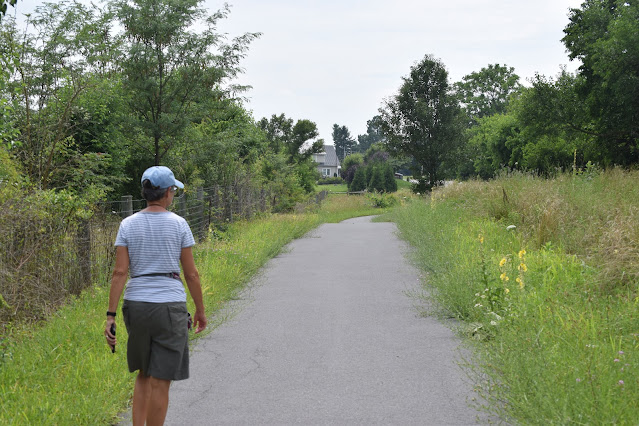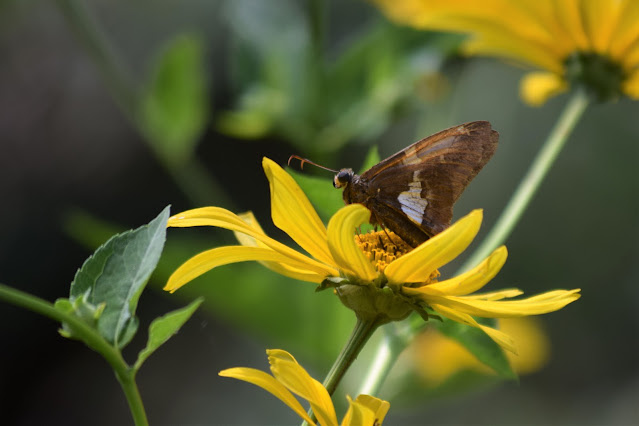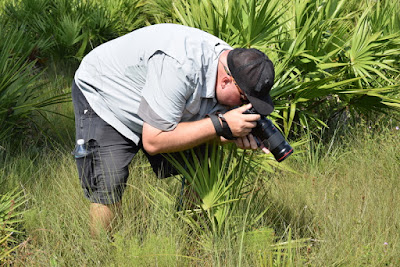A pair of Orange Sulphurs (Colias eurytheme). Male is a bright orange. Host plants: Pea family, Clover, Alfalfa.
We see lots of these in our new home in Winchester, VA.
After 24 years in semi-tropical SW Florida, we decided to downsize and relocate closer to family and are enjoying our spiffy apartment which features a wildflower bordered walking trail.
Brown Knapweed (Centaurea jacea).
Clouded Sulphur female (Colias philodice). Easily mistaken for an Orange Sulphur. A bit paler on ventral hind wing. Host: Clovers.
Paved 3/4 mile trail just steps from our door. So far on our daily walks we have seen deer, turkeys, rabbits, ground hogs, gray squirrels, long-tailed weasels, and lots of birds.
Hiatt Run (namesake of our apartment complex) is a meandering stream and part of the Shenandoah Valley Watershed. It runs just behind our walking trail on protected land by the Shenandoah Valley Battlefields Foundation. This is hallowed ground of the Second Battle of Winchester.
Northern Metalmark (Calephelis borealis). Host: Oblong-leaved Ragwort.
Queen Ann's Lace, also called Wild Carrot. (Daucus carota).
"In the kitchen you must light
Flames as starring, red and white,
As carrots or as turnips shining
Where the cold dawn light lies whinning."
W. Shakespeare
Northern Metalmark ventral view.
Eastern Tailed-Blue (Everes comyntas). Host: Clovers, Bush-clovers, Vetch.
Common Mullein (Verbascum longifolium).
Appalacian Brown (Satyrodes appalachia). 4 eyespots on forewing. Similar Northern Pearly-eye has 5! Difficult to ID in the field!
Host: Tussock/Upright Sedge and other sedges.
Carolina Horsenettle (Solarum carolinense)
Silver -spotted Skipper (Epargyreus ciarus). Host: Black Locust, tick-trefoils, Hog Peanut and Kudzu.
White Honeysuckle (Lonicera albiflora).
Question Mark (Polygonia interrogationis). Host: Elms, hackberries and willows
Cutleaf Teasel (Dipsacus laciniatus).
Eastern tailed-blue. Dorsal with good view of tails!
Field Bindweed (Convolvulus arvensis).
Lots to see in our own neighborhood....and much more throughout the valley.



















































